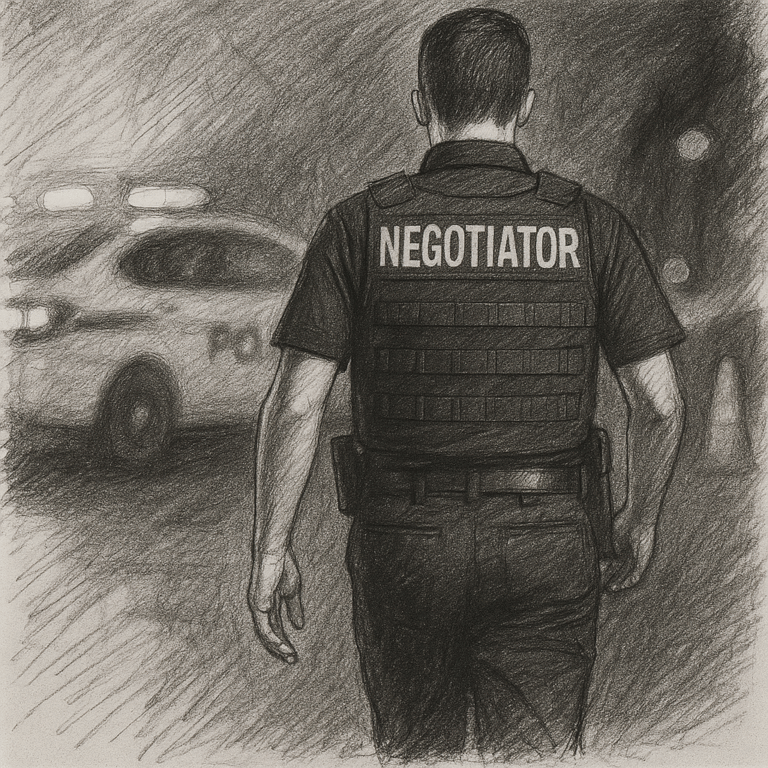Why Non-Evidence-Based Solutions Persist
Key Takeaways
- Simple ≠ Effective: Hooks and Triggers feel true and useful because they’re easy to understand and recall, not because they’re backed by evidence.
- False success builds false confidence: Responders often credit Hooks and Triggers for de-escalation outcomes without accounting for other contributing factors.
- Cognitive shortcuts create a skewed feedback loop reinforcing belief:
- Processing fluency forms false beliefs: Because Hooks and Triggers are easy to recall and apply, they produce deceptive clarity and a false sense of preparedness that discourages critical reflection.
- Confirmation and outcome bias consolidate these false believes: When outcomes are positive, Hooks and Triggers distort evaluation, as responders may attribute success to the method, ignoring other variables or coincidental factors.
- Availability bias sustains these false beliefs: The more frequently a concept is referenced in training or field use, the more legitimate it seems, regardless of evidence, reinforcing familiarity over validity. This, in turn, supports processing fluency and closes the feedback loop.
Building on the concerns about the practical and conceptual limitations of Hooks and Triggers raised in “Part I: Why Intuitive Doesn’t Mean Effective”, this post explores the deeper, psychological forces that explain why the approach (and other non-evidence-based methods) persists in the first place.
If Hooks and Triggers carry such clear limitations, why do they continue to dominate training, education, and practice in crisis negotiation, intervention, and de-escalation more broadly? As explored in Part I, the framework’s intuitive appeal, its simplicity, memorability, and ease of use under pressure inflate its perceived efficacy and reliability, making it an attractive option for first responders, especially during high-stake and high-stress encounters.
However, beneath this surface-level utility lies a more insidious explanation: a set of powerful cognitive biases that not only draw people toward oversimplified solutions but also lock them into uncritical and enduring use. These are second-order drawbacks that don’t just influence how the method is applied in the moment but shape how it is understood, evaluated, and perpetuated over time.
How false beliefs form: processing fluency
The appeal of Hooks and Triggers is deeply rooted in how humans process information. Simple, familiar concepts are easier to learn, recall, and apply, especially under stress. This phenomenon, known as processing fluency, can make ideas feel subjectively more true, regardless of their actual validity.
In practice, relying on Hooks and Triggers passed down from previous calls (e.g., through local files) or earlier conversations (such as during a handoff from primary responders to negotiators) may reduce uncertainty and help first responders feel more confident in navigating crises. However, this ease of retrieval reinforces a belief in the approach’s effectiveness, often without encouraging critical reflection on its limitations or risks.
How false beliefs consolidate: confirmation and outcome bias
Once a belief in the efficacy of Hooks and Triggers takes hold, cognitive shortcuts like confirmation bias help solidify it. Responders tend to notice and remember instances that support the method while overlooking signals that challenge its usefulness. Outcome bias further distorts evaluation by linking success to the strategy itself, regardless of whether other factors played a more significant role.
If a situation de-escalates, responders may attribute success to Hooks and Triggers, ignoring other factors like the passage of time, implicit, para-linguistic, and/or non-verbal communication, which we know carry most weight, or environmental factors. This misplaced credit reinforces a false sense of reliability of Hooks and Triggers.
How false beliefs sustain: availability bias
Over time, these reinforced beliefs become increasingly accessible and familiar, triggering availability bias: our tendency to judge something’s importance based on how easily it comes to mind. With repeated exposure through training, field discussions, and anecdotal reinforcement, Hooks and Triggers begin to feel like the default, reliable option.
Their frequent recall makes them more likely to be used again, especially under pressure, which, in turn contributes to the processing fluency, closing this skewed feedback loop. What we end up with is a cycle that not only sustains belief in an unproven method but actively crowds out opportunities for more evidence-based alternatives to take root.
Stay tuned for Part 3, which concludes this series on Hooks and Triggers by introducing approaches to communication in crisis negotiation and intervention as well as more general de-escalation contexts that are more evidence-based but have often not made the cut into training and education.
Help improve the way we respond to crisis by sharing your thoughts, concerns or questions on the right.
Here’s the link to the pre-print, which is currently in production as a Practice Guideline with the Journal of Community Safety and Well-Being.




